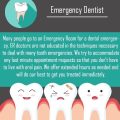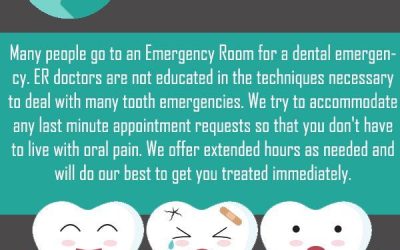So, you’re going about your day when suddenly you feel a strange sensation in your mouth. You quickly realize that something is not right – you’ve lost a filling or crown. Yikes! Don’t panic just yet, though. In this article, we’ll walk you through what to do when you find yourself in this unfortunate situation. Whether it’s a temporary fix or a visit to the dentist, we’ve got you covered. Hang tight and let’s get you back on track to a full, pain-free smile.

Causes of a Lost Filling or Crown
Tooth Decay
One of the leading causes of a lost filling or crown is tooth decay. When tooth decay is left untreated, it can weaken the structure of the tooth and compromise the integrity of the filling or crown. Over time, the decay may cause the filling or crown to become loose and eventually fall out.
Poor Oral Hygiene
Neglecting proper oral hygiene practices can also contribute to the loss of a filling or crown. Regular brushing and flossing help to remove plaque and bacteria that can lead to tooth decay and gum disease. When oral hygiene is lacking, these problems can develop, weakening the tooth and causing the restoration to come loose.
Tooth Grinding
Frequent tooth grinding, also known as bruxism, can put excessive pressure on the teeth and restorations, leading to their failure. The constant grinding and clenching place undue stress on the filling or crown, causing it to become dislodged or damaged. Individuals who grind their teeth may need to explore treatment options, such as wearing a custom mouthguard, to protect their restorations.
Trauma or Injury
An injury or trauma to the mouth can result in the loss of a filling or crown. Accidents, falls, or impact during contact sports can cause the restoration to become dislodged or even fracture the tooth. It’s crucial to seek immediate dental care if a filling or crown is lost due to trauma, as there may be underlying damage to the tooth that needs to be addressed.
Age and Wear
Over time, natural wear and tear can cause a filling or crown to become loose or fall out. With years of use, the adhesive that bonds the restoration to the tooth may weaken, leading to failure. Additionally, as the tooth structure ages, it may become more prone to fractures or other complications that can result in the loss of a filling or crown. Regular dental check-ups can help identify and address these issues before they lead to complete failure.
Symptoms of a Lost Filling or Crown
Visible Void
Upon losing a filling or crown, you may notice a visible void or gap where the restoration once sat. This empty space can be alarming and may cause concern about the health and stability of the tooth.
Tooth Sensitivity
Tooth sensitivity is another common symptom experienced after losing a filling or crown. Without the protection of the restoration, the underlying tooth may become more sensitive to hot or cold temperatures, as well as sweet or acidic foods.
Pain or Discomfort
Pain or discomfort can occur when a filling or crown is lost. The exposed tooth may be more sensitive to pressure, causing pain when chewing or biting down. Additionally, if the tooth’s nerve becomes exposed, sharp or throbbing pain may be experienced.
Difficulty Chewing
Losing a filling or crown can make it challenging to chew properly. The gap left by the restoration may cause discomfort or pain when biting down on certain foods. This may lead to changes in eating habits or an avoidance of certain foods altogether.
Immediate Steps to Take
Retrieve the Lost Filling or Crown
If possible, retrieve the lost filling or crown immediately. Gently clean it with water and avoid touching the inside of the restoration. Be careful not to swallow the filling or crown, as it can cause an obstruction or other complications.
Protect the Tooth
After losing a filling or crown, it’s essential to protect the exposed tooth. Avoid chewing on the affected side of the mouth and be mindful of eating soft, non-sticky foods. Using a temporary dental cement can help cover and protect the tooth until professional dental care can be sought.
Avoid Certain Foods and Drinks
To minimize discomfort and prevent further damage to the exposed tooth, it’s advisable to avoid certain foods and drinks. Sticky or hard foods can put additional stress on the tooth and increase the risk of fracturing or damaging it further.
Rinse with Warm Saltwater
Rinsing your mouth with warm saltwater can help alleviate any discomfort or pain associated with the lost filling or crown. Mix half a teaspoon of salt in eight ounces of warm water and swish the solution around your mouth for about 30 seconds before spitting it out. This can help reduce inflammation and cleanse the area.
Use Temporary Dental Filling Material
Temporary dental filling material, available over-the-counter, can help protect the exposed tooth until you can seek professional dental care. Follow the instructions provided with the product and use it to fill the void left by the lost filling or crown. Remember that this is only a temporary solution, and professional dental treatment is necessary.
Seeking Professional Dental Care
Schedule an Emergency Dental Appointment
As soon as a filling or crown is lost, it’s crucial to schedule an emergency dental appointment. Prompt treatment can help prevent further damage to the tooth and minimize the risk of complications.
Inform the Dentist
When visiting the dentist, inform them about the lost filling or crown. Provide any information about the restoration, such as the material it was made from or how long it has been in place. This will assist the dentist in determining the best course of action for restoring the tooth.
Undergo Examination and X-Rays
During the dental appointment, the dentist will conduct a thorough examination and may take X-rays to evaluate the condition of the tooth and surrounding structures. This will help determine if any additional treatment, such as root canal therapy or extraction, is necessary.
Discuss Treatment Options
Once the examination is complete, the dentist will discuss the available treatment options. This may include replacing the lost filling or crown, repairing a fractured tooth, or exploring alternative restoration options. The dentist will take into account factors such as the extent of damage, the location of the tooth, and the patient’s preferences.
Receiving Permanent Restoration
After discussing treatment options, the dentist will proceed with the chosen procedure to restore the tooth. This may involve placing a new filling or crown, performing a root canal, or other necessary interventions. The goal is to restore the natural appearance and functionality of the tooth while ensuring its long-term health.

Temporary Solutions Until Dental Visit
Dental Cements or Adhesives
Over-the-counter dental cements or adhesives can be used as temporary solutions to cover and protect the exposed tooth until a dental visit is possible. Follow the instructions provided with the product and use it to fill the void left by the lost filling or crown. This can help alleviate discomfort and prevent further damage to the tooth.
Over-the-Counter Temporary Fillings
Temporary filling materials available over-the-counter can be used to temporarily fill the void left by the lost filling or crown. These temporary fillings provide a short-term solution until professional dental treatment can be obtained. However, it’s essential to remember that these fillings are not a permanent fix and should be replaced as soon as possible.
Dental Wax
Dental wax can be used as a temporary solution to cover and protect the exposed tooth. Soften a small piece of dental wax in your hands and mold it around the affected tooth. This can help alleviate discomfort and prevent further damage until professional dental care can be sought.
Avoiding Sticky or Hard Foods
While awaiting professional dental care, it is advisable to avoid sticky or hard foods that can put additional stress on the exposed tooth. Opt for soft, non-sticky foods that are easier to chew and less likely to cause discomfort or damage.
Preventing Future Loss of Fillings or Crowns
Improve Oral Hygiene Practices
Maintaining good oral hygiene practices is crucial in preventing future loss of fillings or crowns. Brush your teeth at least twice a day with a fluoride toothpaste and floss daily to remove plaque and bacteria that can lead to tooth decay and gum disease.
Brush and Floss Regularly
Regular brushing and flossing are essential for maintaining the health of your teeth and gums. Brushing removes plaque and bacteria from the surfaces of your teeth, while flossing reaches the areas between your teeth and along the gumline. This helps prevent decay and gum disease, which can weaken the tooth and compromise the integrity of fillings or crowns.
Avoid Excessive Teeth Grinding
If you grind your teeth, take steps to address this habit and minimize the risk of future fillings or crowns being lost. Talk to your dentist about a custom mouthguard, which can help protect your teeth and restorations by providing a cushioning barrier between the upper and lower teeth.
Wear a Custom Mouthguard
A custom mouthguard, prescribed by your dentist, can help protect your teeth and restorations while you sleep or engage in activities that may lead to teeth grinding or clenching. This preventative measure can reduce the risk of future fillings or crowns being lost due to excessive force on the teeth.
Visit the Dentist for Regular Check-ups
Regular dental check-ups are essential in preventing future loss of fillings or crowns. During these visits, your dentist can monitor the integrity of your restorations, identify any signs of decay or damage, and address them before they lead to complete failure.
Realistic Expectations for Temporary Solutions
Temporary Nature
Temporary solutions are just that – temporary. They are not meant to provide a long-term fix but rather to protect and stabilize the tooth until professional dental care can be obtained. It’s essential to seek dental treatment as soon as possible to avoid complications and further damage.
Limited Durability
Temporary solutions have limited durability and may not withstand the same level of force or wear as permanent restorations. It’s important to follow the provided instructions and avoid putting excessive stress on these temporary measures.
Potential Discomfort
Temporary solutions may not provide the same level of comfort as permanent restorations. There may be some discomfort or sensitivity associated with these temporary measures. This discomfort should subside once the tooth is properly restored by a dental professional.
Not Suitable for All Cases
Temporary solutions may not be suitable for all cases of lost fillings or crowns. If the tooth is severely damaged or the restoration cannot be reattached, the dentist may recommend alternative treatment options. It’s crucial to follow the dentist’s guidance and seek the most appropriate solution for your specific situation.
Potential Complications and Risks
Tooth Infection
If a lost filling or crown is not promptly addressed, it can increase the risk of tooth infection. Bacteria can enter the exposed tooth, causing inflammation and potential abscess formation. Seeking immediate dental care can help prevent or treat these infections.
Tooth Fracture
An exposed tooth without a filling or crown is more susceptible to fractures and cracks. Without the protection and support provided by the restoration, the tooth may be weakened and prone to damage. Prompt dental treatment can help prevent further tooth fractures.
Nerve Damage
In some cases, the loss of a filling or crown may result in nerve exposure or damage. This can lead to increased sensitivity, pain, or the need for more extensive dental procedures such as a root canal. Seeking professional dental care promptly can help prevent or address nerve damage.
Damage to Adjacent Teeth
When a filling or crown is lost, adjacent teeth may be at risk of damage as well. The exposed tooth may shift position or affect the alignment of neighboring teeth. Addressing the lost filling or crown and restoring the tooth promptly can help maintain the overall oral health and harmony of the mouth.
Further Tooth Decay
Losing a filling or crown can make the underlying tooth more susceptible to further tooth decay. Without the protection and seal provided by the restoration, bacteria can enter the tooth, causing decay and recurrent cavities. Seeking professional dental care and maintaining good oral hygiene practices can help prevent additional decay.
Cost of Repairing a Lost Filling or Crown
Factors Affecting Cost
The cost of repairing a lost filling or crown can vary depending on several factors. These may include the type of restoration needed, the extent of the damage or decay, the location of the affected tooth, and the specific dental office or region. Cost estimates can be obtained by consulting with a dental professional.
Dental Insurance Coverage
Dental insurance coverage can help reduce the out-of-pocket expenses associated with repairing a lost filling or crown. Insurance plans may cover a portion or the full cost of the procedure, depending on the terms and coverage of the policy. It’s recommended to check with your dental insurance provider to understand your coverage.
Out-of-Pocket Expenses
Out-of-pocket expenses for repairing a lost filling or crown can vary depending on the individual’s specific dental needs and the chosen treatment option. It’s essential to discuss the cost and payment options with the dental office prior to treatment to ensure transparency and avoid unexpected expenses.
Affordable Treatment Options
If cost is a concern, it’s worth discussing affordable treatment options with your dentist. They may be able to provide alternative solutions or work out a payment plan to make necessary dental care more financially manageable. Open and honest communication about your budget and concerns will help your dentist find the best solution for your needs.
Conclusion
Losing a filling or crown can be an unsettling experience, but prompt action and professional dental care can resolve the issue effectively. By understanding the causes, symptoms, and immediate steps to take, individuals can protect their teeth and seek appropriate treatment. Preventive measures, such as maintaining good oral hygiene, wearing a custom mouthguard, and attending regular dental check-ups, can help minimize the risk of future loss of fillings or crowns. With realistic expectations, proper care, and guidance from your dentist, your smile can be restored to its natural beauty and functionality.












